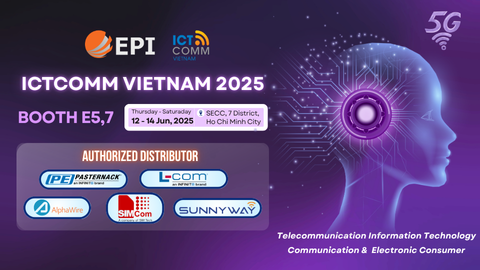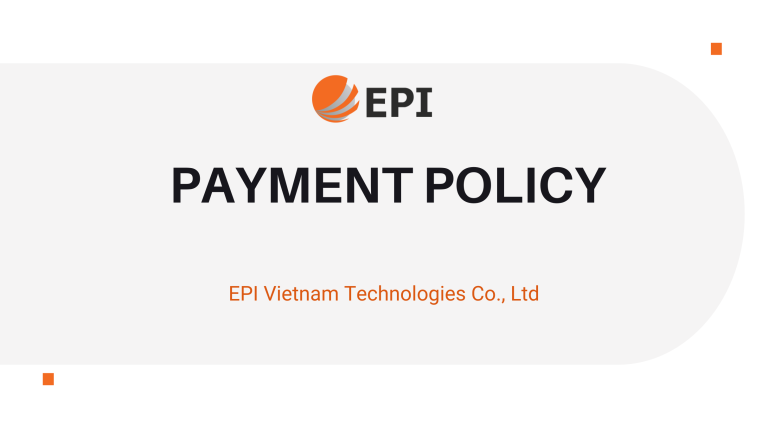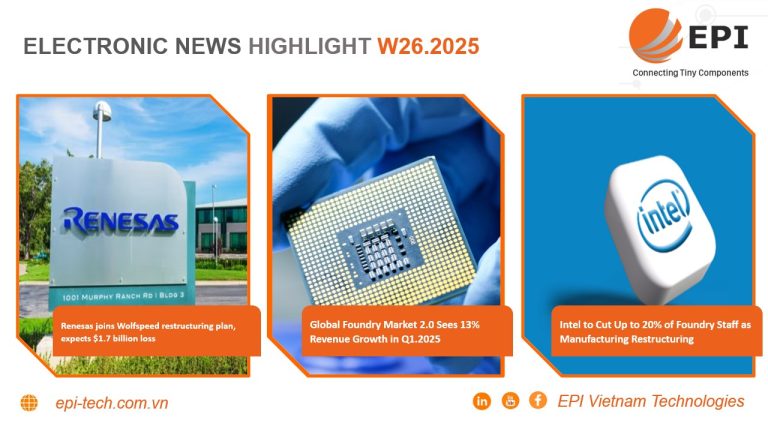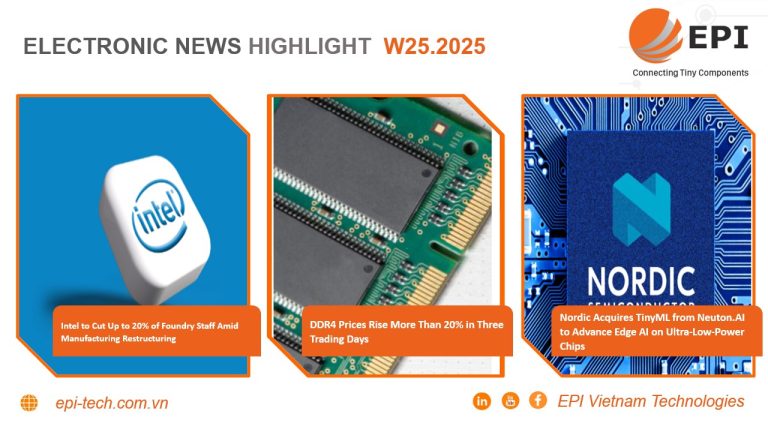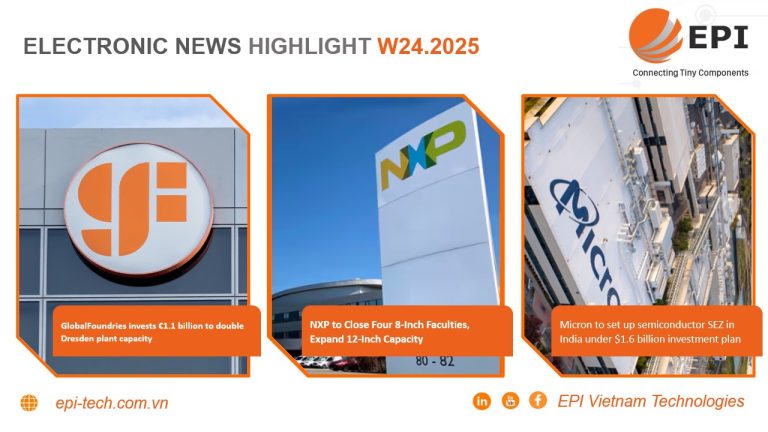ELECTRONICS NEWS HIGHLIGHT W6.2024

1. ECIA: predicts strong growth in component sales in early 2024
According to a recent report from the Electronic Components Industry Association (ECIA), the component sales trend index (ECST) increased 20 points to 98 points, the highest level in the past 21 months, signaling a bright future. outlook despite lingering concerns about high inventory levels and the slow pace of market recovery.
According to the survey, the ECST index of semiconductor, electromechanical and passive components has the most obvious growth, demonstrating high market demand for these products. ECST analysts are optimistic and predict further improvements in the overall component sales index in February 2024.
The parameters also demonstrate market recovery, with the January market index scoring an overall score of 93. The electronics/military/space, healthcare and industrial markets all scored above 100 points. Forecasts indicate that, other than telecommunications/mobile, all markets are expected to surpass the 100-point mark in February. Along with predictions of a 7.8% compound annual growth rate (CAGR) for the electronic components market from 2023 to 2032, the components industry is still showing resilience in the face of challenges.
Learn more: ECIA: Component Sales Set for Growth
2. SK Hynix plans to increase HBM production
SK Hynix recently announced that it plans to increase its high bandwidth memory (HBM) production capacity this year, which was expected to more than double last year.
In a significant milestone, SK Hynix has emerged as the first among the top three global semiconductor storage companies, including Samsung Electronics and Micron, to report a successful profit in the fourth quarter of 2023. The company’s operational profit for Q4 2023 reached 346 billion won (approximately 259 million USD), with a revenue of 11.31 trillion won, marking a substantial 47.4% increase compared to the same period the previous year, surpassing the anticipated 10.47 trillion won.
According to Kim Woo-hyun, Vice Chairman and Chief Financial Officer of SK Hynix, the upward trend in the memory market is expected to persist in the coming year. He noted a surge in orders since the fourth quarter of the previous year, primarily driven by customer expectations of memory price increases. The main demand is stemming from PC and mobile customers with lower inventory levels. Kim Woo-hyun anticipates that DRAM inventory levels will normalize in the first half of this year, and NAND will witness a similar recovery in the latter half.
The report also underscores SK Hynix’s strategic focus on ensuring profitability by concentrating on high-value-added products such as HBM and DDR5 to meet the ever-growing demand. Notably, the sales figures for HBM and DDR5 have seen a fourfold and fivefold increase, respectively, compared to the previous year. The semiconductor industry’s quicker-than-expected recovery is attributed largely to new demands in artificial intelligence (AI) and production capacity reduction initiatives within the industry. As SK Hynix navigates these dynamic market conditions, the semiconductor giant remains poised for continued success in the evolving landscape of memory technology.
Learn more: SK hynix Plans to Double HBM Production Capacity
3. Market demand rebound slower than expected, TI says
In the latest financial report from Texas Instruments, the company disclosed a fourth-quarter revenue decrease to $4.08 billion, marking a 13% decline compared to the same period the previous year. The quarterly net profit also experienced a 30% dip, settling at $1.37 billion, falling below market expectations.
The challenges extended throughout the entire year, with Texas Instruments witnessing a substantial 13% annual revenue reduction, the most significant drop in over a decade. Haviv Ilan, CEO of Texas Instruments, pointed out, “Last quarter, we observed continuous weakening demand in various sectors, with the automotive industry consistently experiencing a decline.”
Texas Instruments attributes the persisting weak demand environment to customer expectations of continued reduction in chip inventory. Rafael Lisardi, a company expert, highlighted the recent downturn as distinct from previous ones, with multiple industries experiencing declines at different intervals. Despite the short-term challenges, the company expresses confidence in the long-term growth of the semiconductor industry, particularly in the automotive and industrial sectors, as emphasized by the Chief Financial Officer.
Learn more: Market demand rebound slower than expected, TI says



 English
English  Tiếng Việt
Tiếng Việt 






